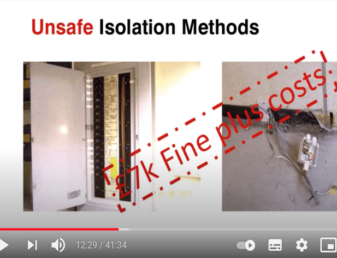Working at height is one of the main causes of injuries and fatalities on-site. This article will give a brief overview of the recommended measure you should take to reduce risk to both you and your colleagues.
Falls from height are the single biggest cause of fatalities on site and in the workplace, according to HSE statistics, and account for thousands more non-fatal injuries. Most of these injuries and accidents happen when working at height for less than thirty minutes and less than ten feet off the ground. It is vital to make a proper risk assessment of how to tackle any work undertaken at height and, where possible, use properly erected mobile scaffolds or other equipment to minimise the risk of any fall.
Five simple things you need to know about working at height
- Only work at height when absolutely necessary and do as much work as possible from the ground.
- Use an already safe, stable base to work from (eg a non-fragile flat roof with a guard rail) and equipment which will minimise the distance and consequence should you fall.
- Do not overload or overreach and provide protection from falling objects.
- Take extra precautions when working on or near fragile surfaces.
- Consider emergency procedures for evacuation or rescue. If something goes wrong, what happens next?
Using ladders safely
For tasks of low risk and short duration ladders or stepladders are often the most sensible and practical option.
- Use the right kind of ladder for the job (for example, don’t use an aluminium ladder near power cables, use a proper roof ladder when working on a roof). Check the ladder for damage before you use.
- Only use ladders where they can be level and stable. If practical secure them for safety at top and bottom, or have someone at the bottom holding the ladder in place.
- Ensure that you have three points of contact on the ladder at any given point – if you’re using both hands lean into the ladder so your knees or chest can help keep you stable.
The Work at Height Regulations 2005
These regulations were introduced to prevent deaths and injuries caused by falling from height, and apply to employers and managers who are responsible for work at height (for example building owners contracting others to work at height, or facilities managers). [Click here for the full regulations https://www.legislation.gov.uk/uksi/2005/735/contents/made]
Generally, the regulations require:
- All work at height must be properly planned and organised.
- Those involved in the work must be competent and have been trained, whether formally or on the job. If someone is still being trained they must be being supervised by someone competent.






